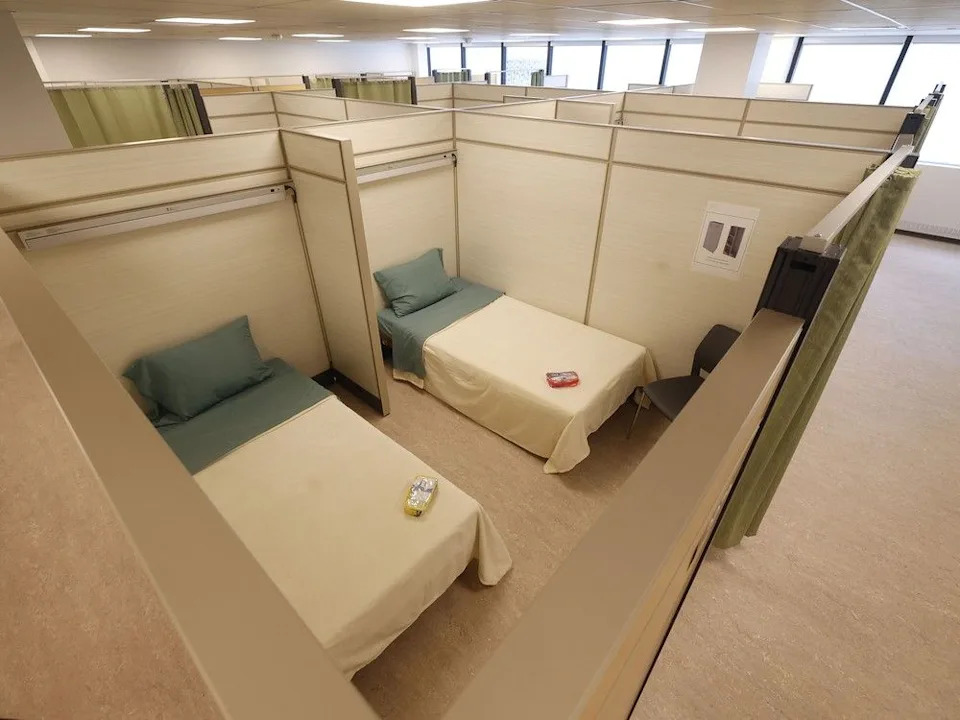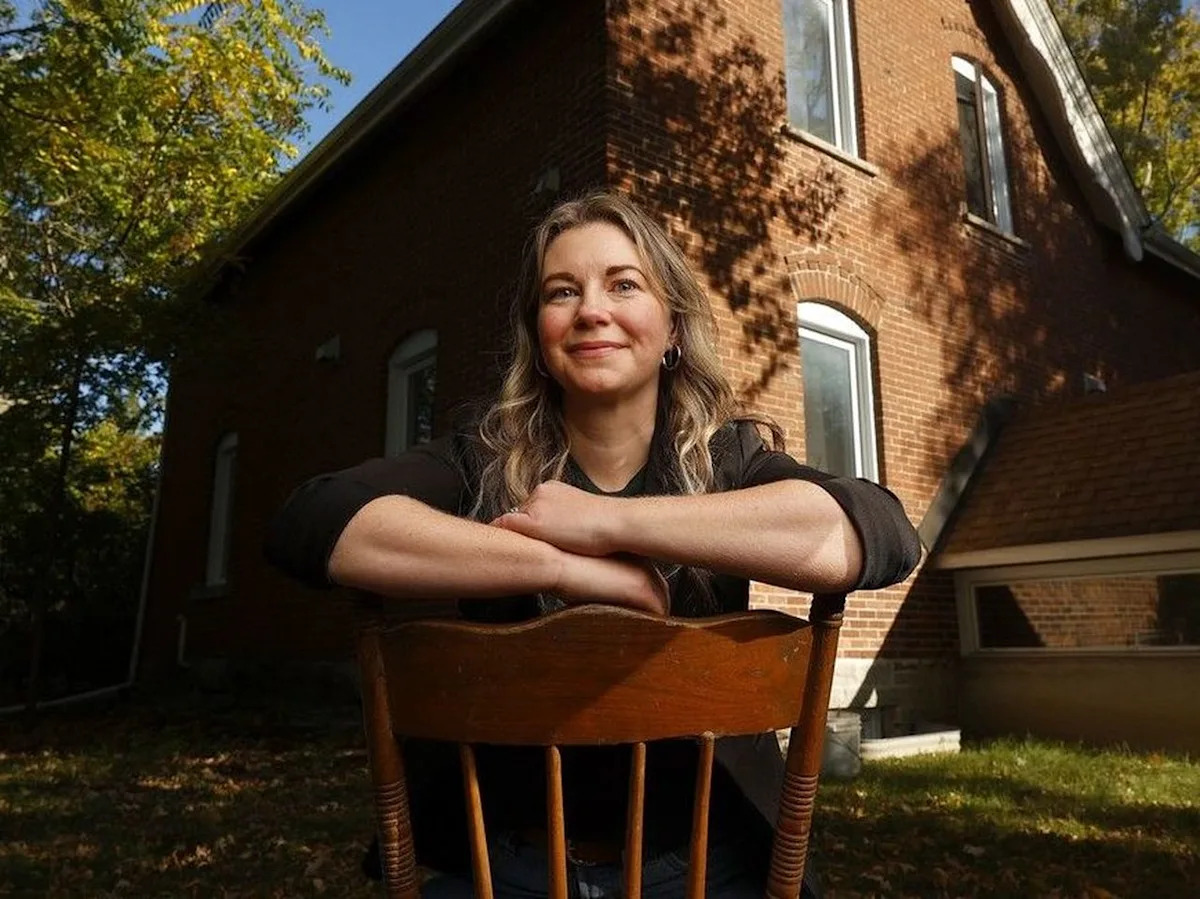The federal government’s decision to withdraw funding for hotel rooms for asylum seekers has raised concerns that the costs and responsibilities will trickle down to municipalities and non-profits.
In Ottawa, the federal government’s decision to withdraw funding “will likely have a negative effect on Ottawa’s shelter system, which is already overburdened and at max capacity,” said Kale Brown, the city’s acting director of housing and homelessness services.
According to the most recent figures, released in April, 708 families were living in hotels and transitional housing. About half were newcomers, said Kaite Burkholder Harris, executive director of the Alliance to End Homelessness Ottawa.
It represents a significant pressure on municipal finances, Burkholder Harris said.
“Other levels of government have to step up.”
Non-profit and community groups in Ottawa are anticipating increased pressure on their programs, too.
“It’s obvious that offering hotel rooms is expensive and its doesn’t provide wraparound supports that will result in long-term success for newcomers,” said Kailee Brennan, executive director of Matthew House Ottawa, which provides support and housing to refugee claimants. “But taking that option away without offering other options will increase stress on the entire system.”
Q: Why did IRCC cancel funding for hotels?
A: Immigration, Refugees and Citizenship Canada (IRCC) has funded hotels since 2017, but this was always a temporary measure to ease pressure on local shelters, and it was clearly communicated to occupants from the outset, said Julie Lafortune, an IRCC spokesperson.
“This transition ends hotel use and refocuses IRCC on its core asylum role while supporting provinces and municipalities to build cost-effective and sustainable long-term solutions,” she said.
Since 2017, the Interim Housing Assistance Program (IHAP) has provided about $1.5 billion to provincial and municipal governments to help cover emergency housing costs from increased numbers of asylum claimants. The 2024 budget provided $1.1 billion billion to extend IHAP for three years.
Through the 2024 budget and direct communication with stakeholders, IRCC made clear that program criteria “would be adjusted to reflect a renewed focus on helping partners develop more sustainable and cost-effective long-term housing solutions.”
All claimants in Ottawa hotels had secured new accommodations and were to relocate no later than Oct. 1, Lafortune said.
“IRCC and the City of Ottawa worked with service providers to connect all claimants to housing. Families received one-on-one case management, referrals to landlords and a range of supports,” she said.
Q: Does that mean the need for temporary housing for asylum seekers has ended?
No. There’s a particular need for transitional housing for families, many of which are headed by single mothers.
The city is working with IRCC and remains hopeful IRCC will offer Ottawa the funding needed to support asylum claimants who need temporary accommodations, Brown said.
The city also works with IRCC to provide services to newcomers already in the municipal shelter system through the federal Interim Housing Assistance Program, he said. Through this funding, the city works with the settlement sector to support households as they transition to long-term housing.
The city has recently expanded its permanent transitional housing capacity.
The St. Joseph transitional housing program, a former convent in the east end, was purchased by the city for $11 million and serves about 150 newcomer singles.
The 230 Queen St. transitional housing location, Ottawa’s first office-to-transitional housing conversion, serves about 140 homeless singles and newcomer singles and has been hailed as a “shining example” of an innovative solution to the housing and shelter crisis.

A July file photo showing the second floor at 230 Queen St., the city’s first-ever office to transitional housing conversion.
Both sites provide accommodations for up to a year and offer intensive, housing-focused case management and settlement supports.
“The goal is to transition individuals staying at the sites into long-term housing as quickly as possible and help them become part of the community,” Brown said.
The problem is that St. Joseph and 230 Queen St. don’t have transitional housing for families. The city has a launched Request for Offer looking to buy or lease a building or part of a building and seeking proposals from owners of motels, hotels, retirement residences, apartments and other properties for immediate, medium- and long-term accommodations suitable for families.
At this stage, no budget has been set as the city is first soliciting potential sites, Brown said. Submissions will be reviewed and analyzed, with prospective proponents contacted as part of the process. Any decision to purchase or lease a site will follow the city’s Real Property Acquisition Policy and require council approval, he said.
Even if the right building can be found at the right price, it will still take time, said Myriam Mekni, executive director of CCI Ottawa (former Catholic Centre for Immigrants), which provides settlement services to newcomers. Past experience has shown it takes about a year for a new building to be ready for people to start moving in, depending on the state of the building, she said.
Q: Why does it take so long for asylum seekers to find permanent housing?
A: Affordable housing is in high demand, but it’s more complicated than that. The process of getting refugee status is not guaranteed and it can take a long time.
Another problem is the low level of subsidies available to asylum seekers, said Karen Walker, chair of the subsidy committee at OMRA, an Ottawa charity that provides rental subsidies, mostly to government- or privately-sponsored refugees.
Under Ontario Works, a single asylum seeker qualifies for $390 a month for rent, plus $343 for all other needs, giving them a total of $733 a month, Walker said.
“That has not gone up since 2018,” she said. “Even a room in a rooming house costs $800 to $900 a month.”
Asylum seekers don’t qualify for certain benefits, including the Ontario Student Support Program (OSAP), Better Jobs Ontario and the Canada Child Benefit, until they have Immigration and Refugee Board decisions and gain “protected person” status, which recognizes them as refugees, she said.
The Canada Child Benefit, along with a provincial component, provides $810 per child under the age of 6, and it can represent a significant boost to families with children once they have protected person status, Walker said.
Meanwhile, work permits expire after two years, but it takes two to three years to get hearings with the Immigration and Refugee Board, she said. Asylum seekers can go to English classes, but they can’t afford to go to university or college to obtain Canadian qualifications.
“I think a lot of them will end up on the street,” Walker said. “They have such a long wait for those benefits, and nothing is being done to relieve this problem. It will make a tough situation worse.”
Q: What level of government is responsible for funding temporary housing for newcomers?
A: It’s a complicated patchwork of federal, municipal and provincial funds, often with charitable donations raised by community groups.
Municipal contributions for housing and homelessness accounted for 51.5 per cent of total reported funding from all three levels of government, according to a report from the Association of Municipalities of Ontario released last January.
“The scale of the issue — and the infrastructure required to solve it — extends far beyond what municipalities can sustainably fund,” the report said.
Ending federal assistance will have an impact on municipal taxpayers, Toronto Mayor Olivia Chow warned about the end of the hotel funding. Toronto residents could see an increase in their taxes to account for shelter costs or see more people living on the streets if the federal government doesn’t provide additional money for asylum seekers, she said.
The federal Interim Housing Assistance Program has paid for emergency accommodations, including hotels. The program has evolved over time, but has largely been doing two things: covering the costs of the IRCC hotels plus reimbursement and a cost-sharing model for municipalities and provinces providing temporary accommodations, Brennan said.
Community-based options are significantly cheaper than hotels, with better long-term outcomes, Brennan said. Matthew House costs $37 a day for a single person, for example. According to a survey of about 100 former clients since the program opened in 2010, about 94 per cent reported they had never returned to a homeless shelter.
“I think Ottawa has been quite forward-thinking and progressive in moving ahead with sustainable community-led solutions,” Brennan said.
“As taxpayers, we should want the best return on our dollar. Community models support people. Hotels are a Band-Aid on a bullet wound. It’s an opportunity for all of us to reflect on good use of taxpayer dollars. At the end of the day, it’s a jurisdictional dispute. The hotel situation is a very real example of that.”
About 40 per cent of CCI Ottawa’s budget comes from the federal government and another 40 per cent comes from the city, Mekni said. The remainder comes from the province and charitable donations.
In Ontario, municipalities often take the lead, frequently with federal funding, she said, but that is not the case in every province.
“The three levels of government need to get together and discuss this.”
Q: What are the next challenges?
The number of asylum seekers in Ottawa has dropped — one reason why the city’s controversial plan to build two tent-like structures was dropped.
But Mekni points out that some asylum seekers who came to Ottawa two or three years ago are still not housed permanently.
More funding is needed to focus on getting asylum seekers ready for the job market, she said. Some are looking to get their professional accreditation recognized or updated. Others need support in preparing résumés or doing job interviews.
“There is a lot of things we want to do, but it’s not eligible for funding from the government,” Mekni said.
The federal government’s 2017 decision to support municipalities was a good one, said Patti Lenard, a professor of applied ethics at the University of Ottawa.
“Asylum seekers are some of the most vulnerable people in the entire world. However, once they have filed a claim and and have been recognized, they are able to work,” Lenard said.
“The more services are offered on the front end, the quicker they are able to get on their feet and start working. That’s what we all want. The faster we can get people into the workforce, the better. You can provide support, or you can dump them on the street. We would have to pay for it either way. The best hope is that people are talking about it for moral reasons and financial reasons.”
Our website is your destination for up-to-the-minute news, so make sure to bookmark our homepage and sign up for our newsletters so we can keep you informed.
Related
